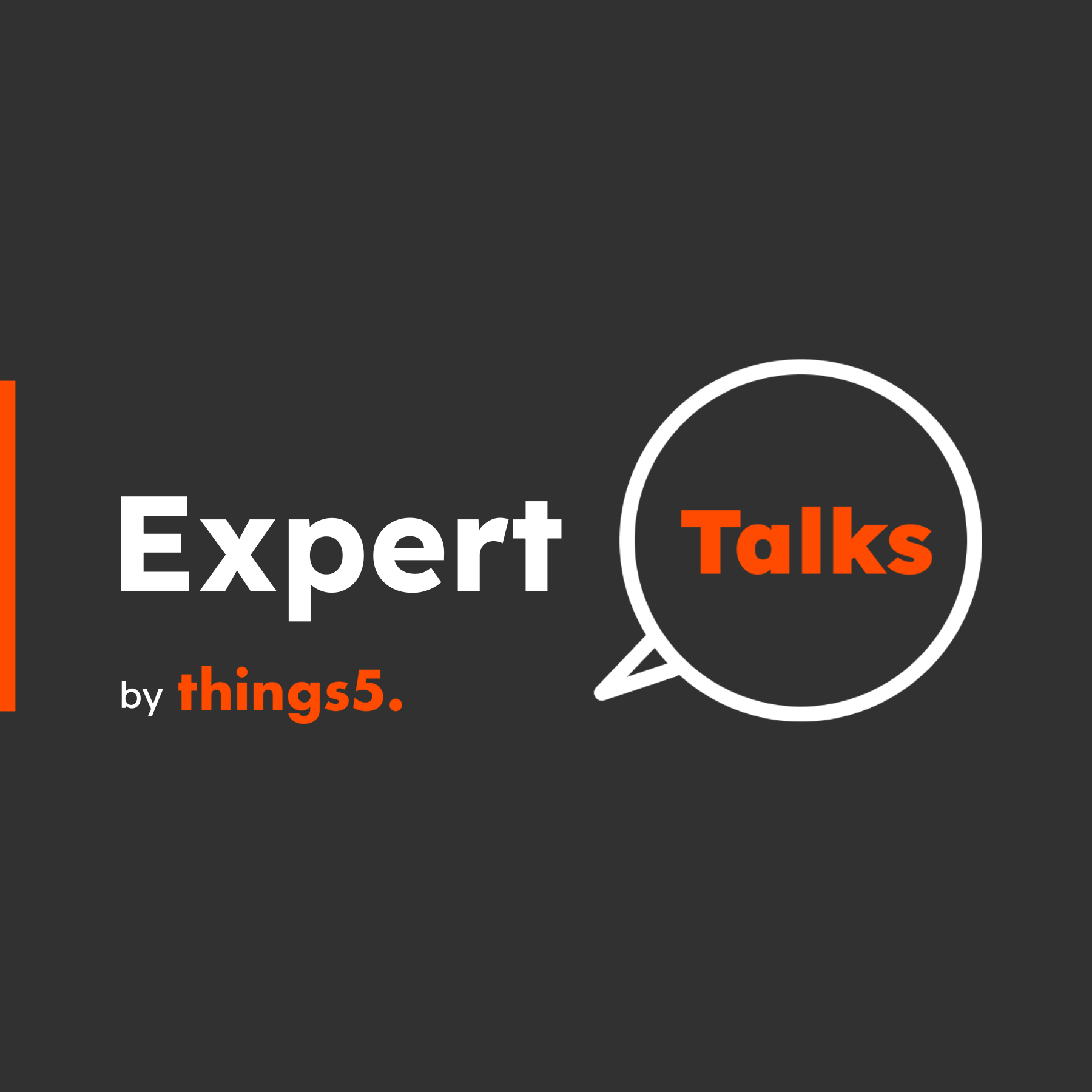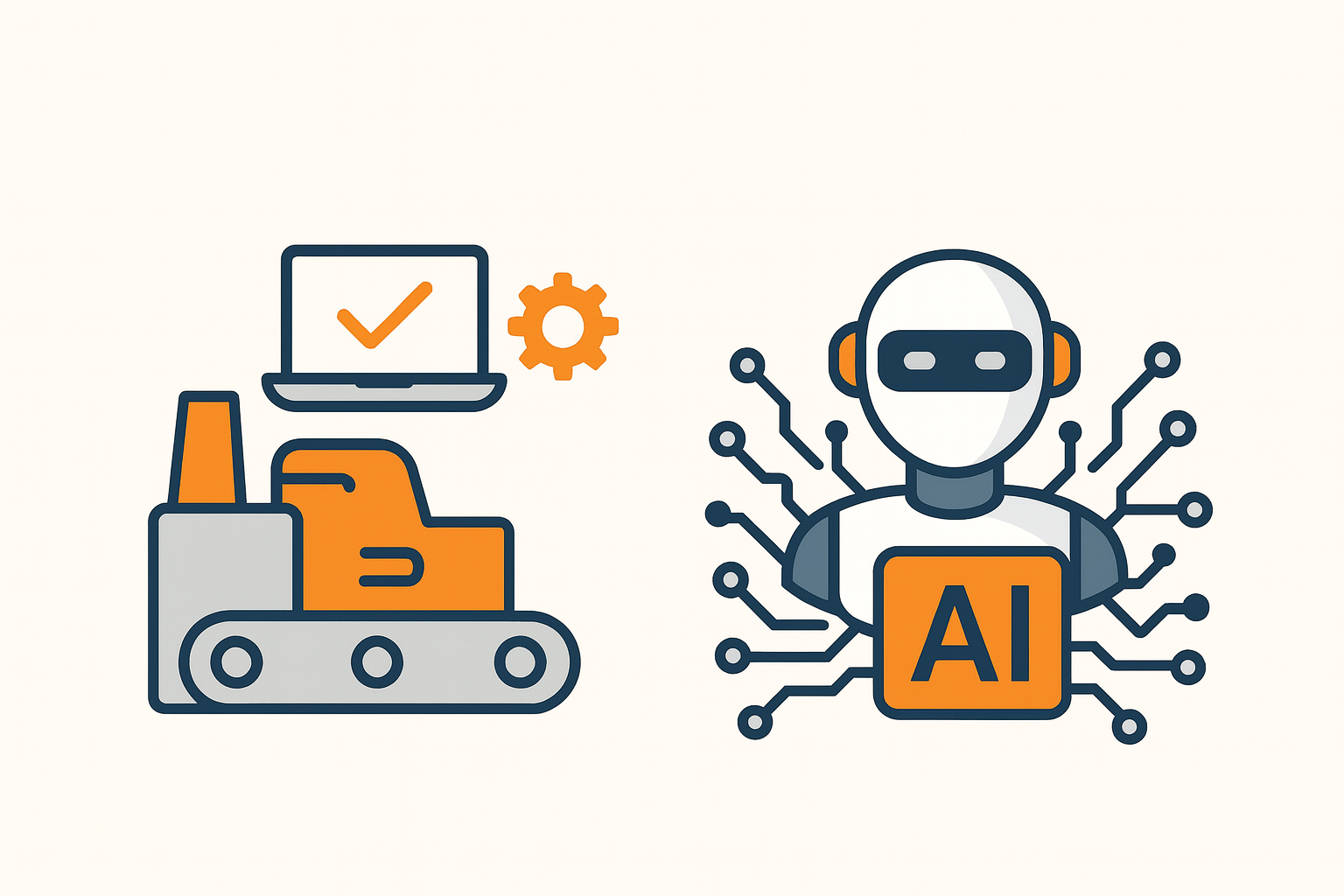35 wonderful real-life ideas for your projects
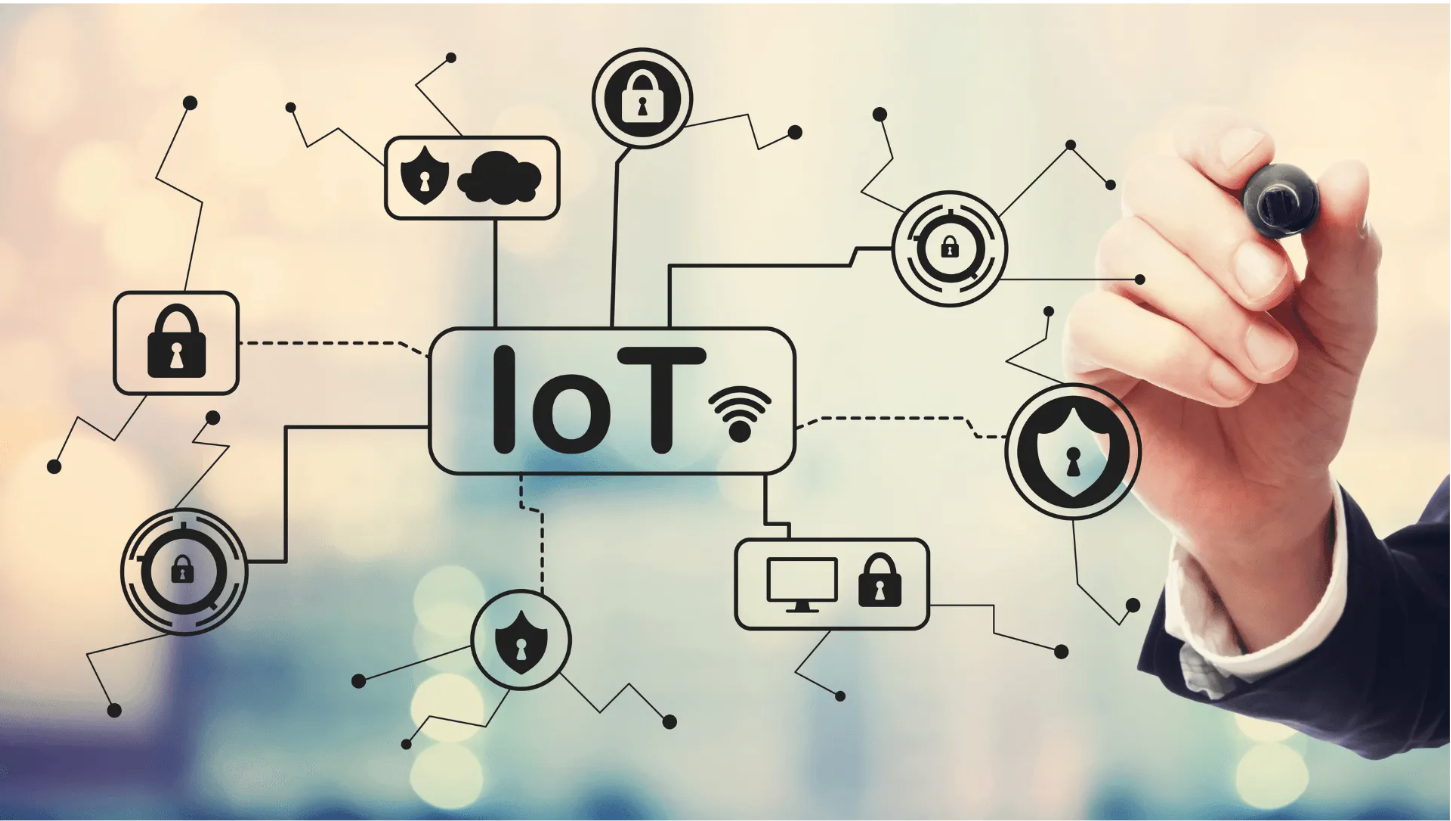
35 real-life IoT applications to get some ideas for your projects

Daniele Delle Case
12 December 2022
The Internet of Things (IoT) is quickly becoming an integral part of our lives and an important part of many businesses. With a wide range of applications, IoT is able to connect physical objects to the internet and enable them to communicate with each other and exchange data. This technology has opened up a world of possibilities and has become an integral part of many industries.
In this article, we will look at 35 wonderful IoT applications that can provide some ideas for your own IoT projects. From home automation to health monitoring to smart cities, these applications demonstrate the incredible potential of IoT. We hope this article will help you get some inspiration for your own IoT projects.
What is IoT?
Internet of Things (IoT) is a network of physical objects — devices, vehicles, buildings and other items — embedded with electronics, software, sensors, and network connectivity that enable these objects to collect and exchange data. IoT allows objects to be sensed and controlled remotely across existing network infrastructure, creating opportunities for more direct integration of the physical world into computer-based systems, and resulting in improved efficiency, accuracy and economic benefit.
How to get all the value out of IoT data?
We, at Things5, have a long experience in helping machines and devices vendors in getting the most value out of their IoT devices. Here are some of the key learnings that we got from cooperating with our customers in building their IoT Applications:
1.Collect any useful data.
IoT devices generate a lot of data that can be used for insight and analysis. Collect all the useful data from the devices but remember, not all data is created equal. Evaluate the data that your IoT devices are generating to determine which is the most valuable and would be most useful for your business. Add new sensors to your machines if you are missing some important data for your goals. Create your data strategy.
2.Utilize IoT analytics.
Leverage analytics tools and technologies to make sense of the data collected from your IoT devices. Analyzing the data can help you uncover patterns and insights about your products, customers, and operations. Things5 is a great option for this scope.
3. Integrate with existing business systems.
Connecting your IoT devices with existing systems such as CRM, ERP, SCM and other IoT applications can help you get the most out of the data. This can be used to optimize operations, improve customer service, and drive innovation.
4. Invest in building the right IoT applications or services.
Evaluate your needs and invest in the right technology solutions to ensure you are getting the most out of your IoT devices. This includes analyzing your business processes, your pain points, designing the expected user experience, selecting the right providers, selecting the right type of networking technology, and choosing the right hardware and software.
5. Exploit artificial intelligence.
Use artificial intelligence to identify potential problems before they occur, to provide recommendations or to automate processes. This helps to improve productivity, reduce mistakes, reduce downtime and maintenance costs, as well as improve customer service.
6. Take advantage of automation.
Automating processes can help to streamline operations, reduce costs, and increase efficiency. Use IoT devices and AI to automate processes such as inventory management, order processing, and customer support.
In the following paragraphs you will be shown several IoT applications and technologies designed to improve real-life situations.
Overview of some wonderful IoT applications
In the following paragraphs we'll introduce some applications of IoT technology in different context. Take a look at them and feel free to leave your comments or questions about.
IoT Applications in Smart Home
Smart home technology is one of the most popular applications of IoT. Smart home technology allows you to control a variety of connected devices in your home such as lights, thermostats, security systems, and more. You can control these devices remotely through a mobile app or a voice assistant such as Amazon Alexa or Google Home.

A. Automation of home & professional appliances
With the help of IoT, home appliances such as washing machines, refrigerators, air conditioners, and lights can be automated. This means that they can work on their own or that you can control them remotely with the help of a mobile app or a voice assistant. You can set up schedules for different appliances, allowing you to turn them on and off at any time of the day. This can help you save energy and money. Furthermore, you can also receive alerts if something goes wrong with any of your home appliances, so you can take action right away. All these features are made possible by the power of IoT, making it an essential part of modern homes.
An example of an IoT application in home & professional appliances is our Icematic case study.
B. IoT applications for security systems
With the help of connected cameras, you can monitor and control your home security system remotely. You can also be alerted when there are any suspicious activities or intruders in your home.
Furthermore, you can also install motion-sensing sensors and alarms that alert you when someone is trying to break into your home.
Additionally, you can use facial recognition technology to identify any unwanted visitors.
In addition to that, you can also integrate the security system with your home automation system so that you can control your lights, doors, and other devices remotely. This will help you to keep your home secure even when you are away.
An example of an IoT application in security systems is Wyze.
C. Energy management
Energy consumption in your home can also be managed using IoT. You can set up smart thermostats, lights and appliances to turn off when not in use or when you are away. This can help you save money on your energy bills. You can also use IoT to monitor your energy usage. You can set up sensors to track your energy consumption and receive alerts when a device is using too much energy. This can help you identify areas where you can save energy and money. Additionally, you can use IoT to switch to renewable energy sources such as solar or wind. This will not only help you save money, but also reduce your carbon footprint.
An example of an IoT Smart Thermostat is NetAtmo.
D. Smart gardening
Connected devices can also be used to automate your gardening tasks. You can install sensors to monitor the soil moisture, temperature, and light levels in your garden. You can also use connected sprinklers to water your plants automatically. Using connected devices, you can create a smart garden that takes the hassle out of gardening. You can set up reminders to water your plants, as well as alerts to inform you when it's time to fertilize.
With access to real-time data about your garden, you can make better decisions about how to care for your plants. You can even monitor the health of your plants from a distance by using a smartphone app. Smart gardening can make growing your own garden easier and more enjoyable.
An Example of a connected sprinkler is Rachio.
IoT Applications in Healthcare
IoT has revolutionized the healthcare industry. With the help of IoT, healthcare professionals can monitor patients remotely and provide timely care and treatment.
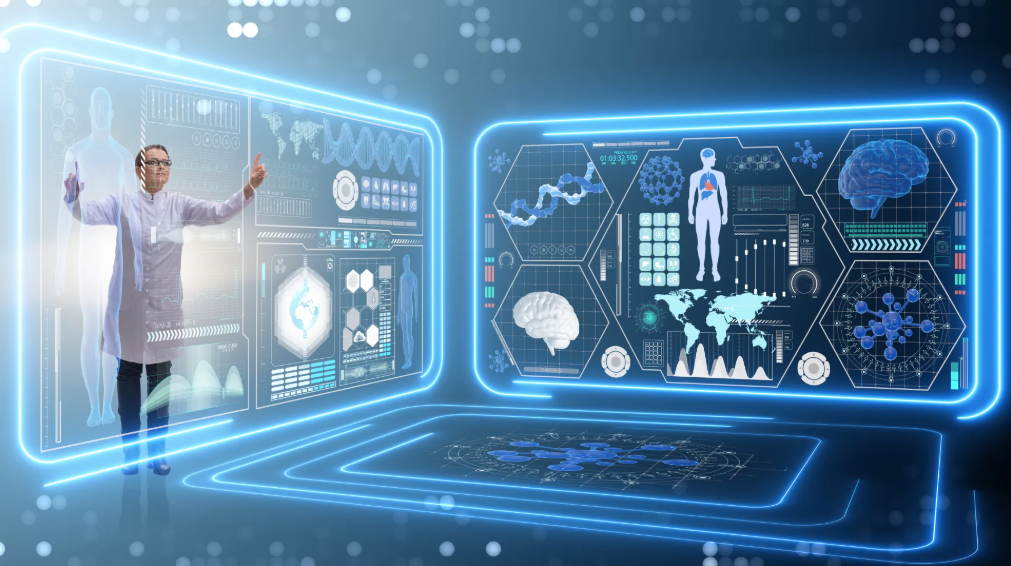
A. Remote patient monitoring
Connected medical devices can be used to monitor patients remotely. For example, sensors can be used to monitor vital signs such as heart rate, blood pressure, and temperature.
Through remote patient monitoring, healthcare providers can also track patients' medications and ensure they are taking them as prescribed. This helps reduce the risk of complications due to incorrect dosages or missed doses.
Additionally, patient monitoring can improve communication between patients and healthcare providers, allowing for more efficient and timely care.
By providing patients with access to their data, it can also help them become more informed about their health and become more engaged in their own care. Ultimately, remote patient monitoring enables healthcare providers to better monitor patient health and quickly respond to any potential issues. An example of a remote patient monitoring solution is 100plus.
B. Wearable medical devices
Wearable medical devices such as fitness trackers are IoT applications that can be used to monitor the health of patients. These devices can track activities such as steps taken, calories burned, and sleep quality.
In addition, these devices can be used to monitor and control certain medical conditions such as diabetes. For example, insulin pumps and continuous glucose monitors can be connected to the device to help regulate insulin levels. This information can be used to adjust insulin doses and alert the user if there is an issue.
Wearable medical devices can also be used to track vital signs such as heart rate and blood pressure, allowing doctors to track changes in the patient’s condition.
By combining these devices with other healthcare technologies such as artificial intelligence, medical professionals can gain a better understanding of the patient and provide better care. Smartcardia is an example of a wearable medical device.
C. Smart Hospitals
Smart hospitals use connected devices such as sensors, cameras, and RFID tags to monitor patients, manage medical records, and automate processes such as inventory management. This can help reduce costs and improve patient care.
Smart hospitals can use artificial intelligence (AI) to analyze data, detect anomalies, and predict patient outcomes. AI-powered robots can also be used to assist in medical procedures. Smart hospitals also offer remote patient monitoring, allowing medical staff to keep track of patients from afar. This can help reduce hospital overcrowding and improve the quality of care for patients. Furthermore, it can help reduce the costs of patient care and improve patient safety. Smart hospitals are revolutionizing the way healthcare is provided and are helping to make healthcare more accessible and affordable. Hanwell monitors the cold cycle among hospital.
IoT Applications in Smart Cities
IoT can be used to create smart cities that are connected and efficient. Smart cities use connected devices such as sensors, cameras, and RFID tags to monitor traffic, manage waste, and provide public services. This can help reduce costs and improve the quality of life for citizens.
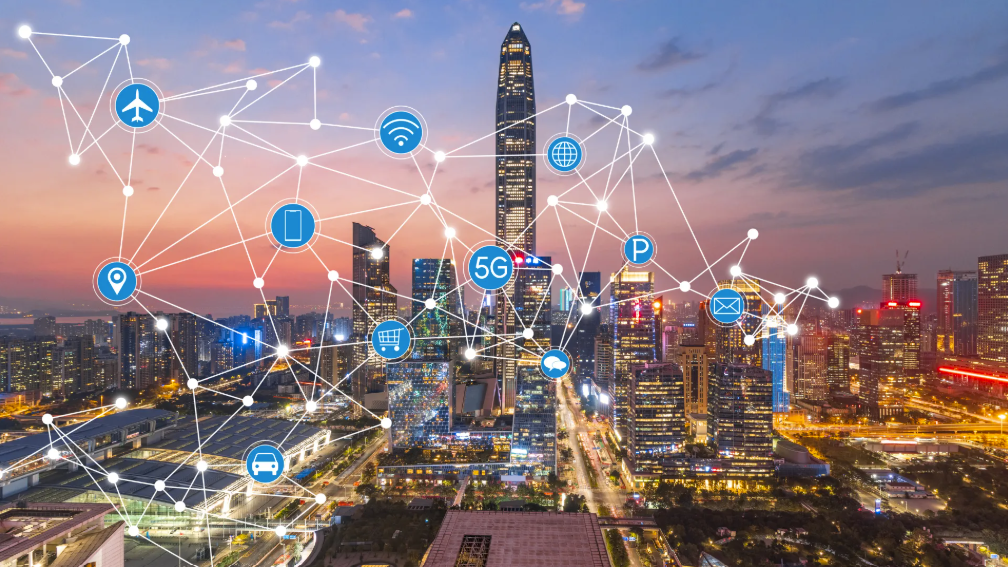
A. Traffic management
Data from sensors, connected cars and mobile phones can be used to track traffic flow and identify bottlenecks. This data can then be used to adjust traffic signals and optimize traffic flow. Traffic management can also be improved by utilizing predictive analytics. Predictive analytics can be used to anticipate potential traffic issues and take preemptive measures to prevent them. For instance, predictive analytics can identify areas with high traffic congestion, and suggest alternate routes to drivers to help reduce traffic. Furthermore, predictive analytics can be used to anticipate the maintenance needs for roads, and alert the relevant authorities to take preventative measures before any major traffic disruption occurs.An example of a smart traffic monitoring solution is Intertraffic
B. Smart waste management
Sensors can be used to track the level of waste in bins and identify areas that need to be serviced. This can help reduce costs and improve efficiency.
Additionally, IoT applications can be used to track the movement of waste from collection to disposal, allowing for greater transparency and accountability. Smart waste management systems can also be used to detect and control illegal dumping and help manage hazardous materials. By utilizing the power of IoT, cities can reduce waste, decrease costs, and protect the environment. Nordsense is anexample of IoT application for waste management.
C. Public services
IoT can also be used to provide public services such as parking, public transportation, and emergency services. Sensors can be used to monitor parking spaces and provide real-time information about availability. Those IoT applications can help reduce traffic congestion and improve the quality of life for citizens.
Public transportation can also be enhanced through the use of IoT technology. Sensors can be used to monitor the speed and location of buses and trains, allowing for more efficient scheduling and better service. SmartParking offers sensors to monitor parking slots occupancy.
Additionally, IoT applications can be used to provide emergency services such as fire detection and medical monitoring. With the help of sensors and connected devices, these services can be provided quickly and with greater accuracy.
By leveraging the power of IoT applications, cities will be able to provide better public services and improve the quality of life for their citizens.
D. Smart lighting
Smart lighting is one of the most popular applications of IoT in cities. Smart lighting systems can be used to control street lights, saving energy and reducing energy bills.
Smart lighting systems can also be used to improve safety. Smart lighting systems can be used to detect motion and turn on or off lights as needed, deterring crime and increasing visibility at night.
Smart lighting systems can also be used to create unique lighting effects, providing a more welcoming atmosphere for residents and visitors alike. In addition, these systems can be integrated with other IoT applications and technologies, such as cameras and sensors, to create an even more secure and convenient environment. Smart lighting like Tvilight are a great way to make cities more efficient, safer, and more inviting.
E. Air quality monitoring
Air quality IoT sensors can be used to monitor air quality and alert citizens when the air quality is poor.
The air quality monitoring system can be further developed to allow citizens to access real time data of air quality in their area. This data can be used to identify hotspots and inform the public of the health risks associated with poor air quality. Additionally, citizens can be informed of the best times to go outside if the air quality is poor.
Municipalities can use this data to create better urban planning policies and help reduce air pollution and its impacts. The data can also be used to analyze trends over time and inform citizens of any changes in air quality. By implementing air quality monitoring, cities can become healthier, cleaner, and more sustainable.
An example of wearable air quality monitoring system is
Narvalo.
IoT Applications in Smart Retail
IoT can be used to create smart retail experiences. Smart retailers use connected devices such as sensors, cameras, and RFID tags to track inventory, analyze customer behavior, and provide personalized services. This can help improve customer satisfaction and increase sales.
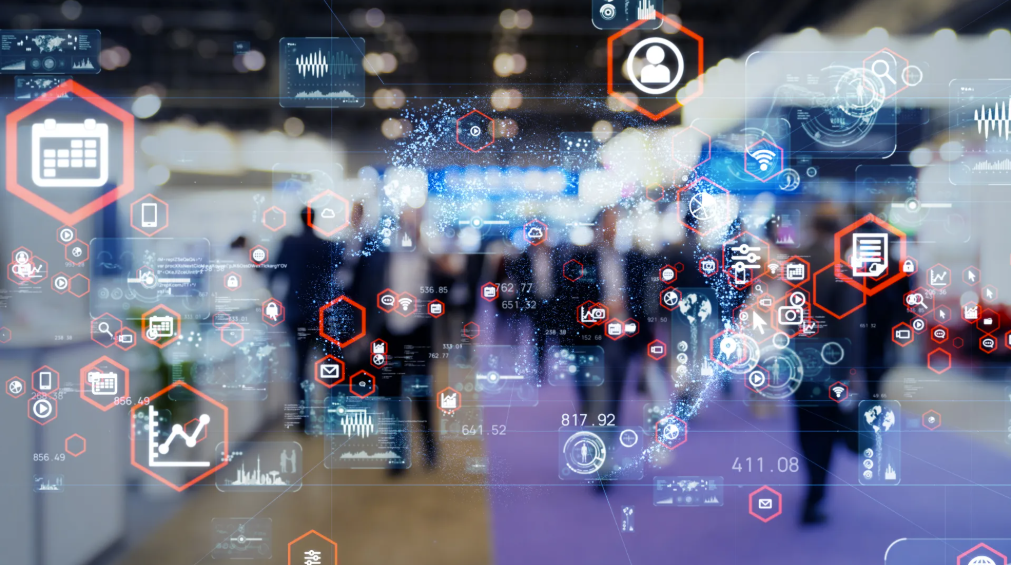
A. Retail Inventory management
RFID tags can be attached to products to track their movement throughout the store, allowing retailers to know exactly how many products are in stock at any given time. Cameras can be used to monitor shelves, ensuring that products are being refilled quickly and efficiently. This can reduce the amount of time spent manually counting inventory and make it easier to identify which products are selling best. Additionally, sensors can be used to detect when stock is running low and alert retailers, so they can quickly restock shelves with the right items. By using these tools (like RIOT), retail inventory management can become more efficient, accurate and cost-effective.
B. Customer analytics
Sensors and cameras can be used to track how customers move around stores and identify areas of interest. These IoT applications can then be used to provide personalized services and increase sales.
In addition to tracking customer movements, customer analytics can be used to assess customer preferences and identify trends in product purchases. This data can be used to inform store layout and design, as well as to predict future customer behavior.
By leveraging customer analytics, businesses can optimize their product selection and marketing strategies to better meet the needs of their customers. Furthermore, customer analytics can be used to create targeted promotions and discounts that are tailored to specific customer segments. Ultimately, customer analytics provides businesses with the insight necessary to increase profits and ensure customer satisfaction. An example of IoT enabled customer analytics is Nextome.
C. Personalized retail services
IoT can be used to provide customers with a more personalized shopping experience. For example, retailers can use facial recognition technology to recognize customers when they enter the store, and then provide them with personalized recommendations based on their past purchases.
Additionally, retailers can use AI-powered chatbots to answer customer queries and provide them with personalized product information. All of these technologies can help create a more engaging and interactive shopping experience for customers, leading to higher satisfaction and loyalty. Tools like Plexure can help retailers provide personalized experience.
IoT Applications in Smart Agriculture
IoT can be used to create smart farms that are more efficient and sustainable. Smart farms use connected devices such as sensors, cameras, and drones to monitor crops, track livestock, and manage irrigation. This can help reduce costs and improve yields.
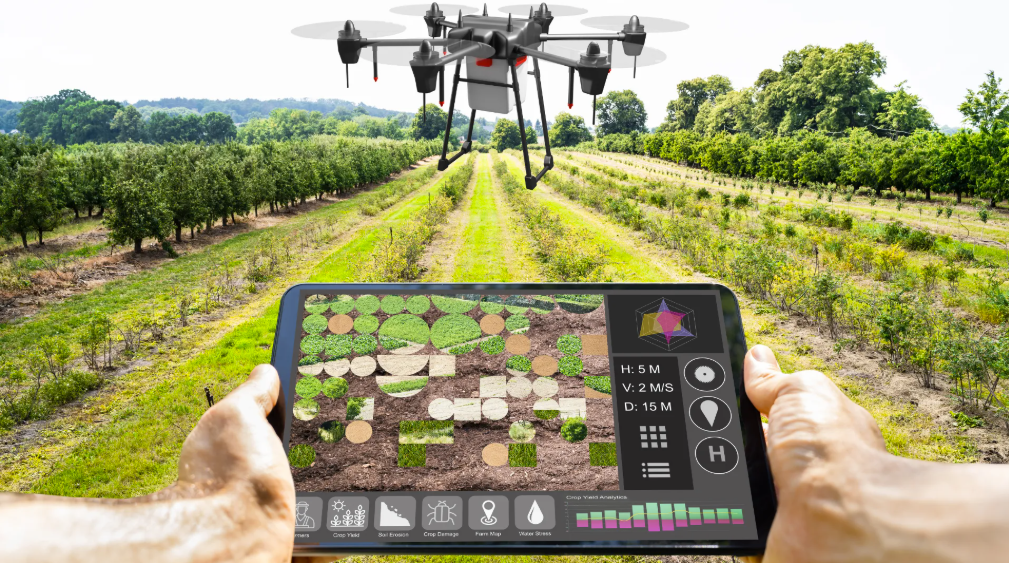
A. Soil monitoring
IoT can be used to monitor soil conditions in real-time. Sensors can be used to track moisture, temperature, and nutrient levels in the soil. This data can then be used to adjust irrigation systems and optimize crop yields.
In addition, IoT soil monitoring applications can help detect changes in soil conditions, such as soil erosion, nutrient depletion, and soil contamination. Such changes can be identified early on, allowing farmers to take action to mitigate their effects. This can help to protect crops and increase crop yields.
IoT applications for soil monitoring can also be used to monitor soil health over time, allowing farmers to make informed decisions about their land. In this way, IoT can help farmers optimize their yields and protect their land in the long run.
Sensoterra is an example of an IoT enabled soil monitoring system.
B. Crop monitoring
Sensors can be used to track the health of crops, identify areas that need attention, and alert farmers when there are potential problems. Data collected through IoT sensors can be used to inform farmers of factors such as soil moisture content, weather conditions, nutrient levels, and pest infestations.
By analyzing this data, farmers can adjust their practices to ensure optimal crop health. For example, they can adjust irrigation schedules, fertilization practices, and pest control measures.
Additionally, IoT applications can be used to track the quantity and quality of crop yields. Farmers can use this data to determine which crops are producing the most and adjust their practices accordingly. This helps them to maximize their yield and increase their profits.
Furthermore, it will be possible to monitor the conditions of storage areas to ensure that crops are not being damaged due to extreme temperatures or humidity levels. By using IoT, farmers can ensure that their crops are healthy and maximize their yields. Spagnol provides Iot devices for crop monitoring
C. Livestock monitoring
IoT can also be used to monitor livestock. Sensors can be used to track livestock and identify areas of concern. This data can then be used to provide timely care and treatment.
For example, sensors can be used to monitor the temperature of a livestock enclosure, alerting farmers to potential health issues. Sensors can also be used to monitor food and water intake, and detect signs of distress. The data collected from these sensors can be used to inform decisions about the care and management of livestock.
In addition, IoT applications and data can be used to monitor the health of livestock. Sensors can be used to monitor vital signs such as temperature, heart rate, and respiration. This data can then be used to provide early detection of diseases or other health issues. Moonsyst provides wearable sensors to monitor livestock.
D. Irrigation management
IoT technology can revolutionize irrigation management. By using soil sensors and tools like Lumo farmers can monitor soil moisture levels, irrigation systems can be adjusted in real-time to ensure optimal water usage. This can help reduce costs and improve crop yields. Furthermore, advanced analytics can be used to analyze data from the sensors and make predictions about future irrigation needs. This can lead to more efficient irrigation practices and improved agricultural productivity.
E. Visual Detection of Plants Diseases
The use of IoT applications for visual detection of plant diseases can provide great benefits to farmers. With the help of sensors and cameras, the plants in the field can be scanned for signs of diseases or pests. The data collected by these devices can then be analyzed to detect any abnormalities such as wilting, discoloration, or other signs of diseases. This information can then be used to alert farmers and take the necessary steps to prevent further damage to the crops. Moreover, this technology can also be used to monitor the spread of diseases, helping farmers to take preventive measures to limit its impact. With the help of IoT, farmers can thus ensure that their crops remain healthy and productive. As an example,
Agrio provides an App to detect plant diseases using phone pictures.
IoT Applications with Wearable Devices
Wearable devices are another popular application of IoT. Wearable devices such as fitness trackers can be used to monitor activities such as steps taken, calories burned, and sleep quality. This data can then be used to provide insights into the user’s health and lifestyle. Wearable devices can also be used to track location, provide notifications, and even make payments.
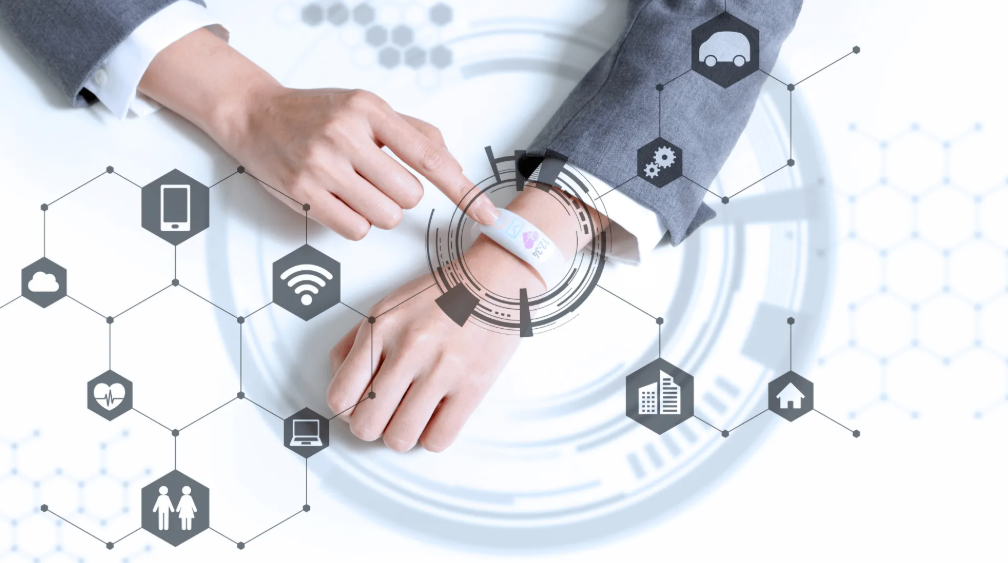
A. Fitness trackers
Fitness trackers use sensors to track activities such as steps taken, calories burned, and sleep quality. This data can then be used to identify potential health issues and provide insights into your lifestyle.
B. Smartwatches
Smartwatches use sensors to track activities such as steps taken, calories burned, and sleep quality. This data can then be used to provide personalized health and fitness advice. Smartwatches are also capable of connecting to your smartphone and other devices to send notifications, enable hands-free calling, and control music playback.
Furthermore, many smartwatches have built-in GPS technology that can be used for tracking your location, running routes, and other outdoor activities.
The app market for smartwatches is growing, allowing users to access a wide array of features such as weather, news, and games. The future of smartwatches will continue to evolve as more features, such as voice control, become available. With the help of IoT, the possibilities for smartwatches are endless. An example of a Smart Watch is Fitbit.
C. Virtual reality headsets
Virtual reality headsets use sensors to track head movements and provide an immersive experience. Using virtual reality headsets, users can experience a simulated environment in a realistic way. They allow the user to interact with three-dimensional objects, feel a sense of presence, and explore a variety of digital worlds. Virtual reality headsets can also be used to create virtual classrooms and training simulations. For example, surgeons can use them to practice operations and students can use them to explore distant environments. In addition, virtual reality headsets can be used to create virtual reality experiences and games, providing hours of exciting entertainment. Ultimately, virtual reality headsets provide an opportunity to explore and experience the world in a new, exciting way. Meta Quest Pro is an example of VR Headsets.
IoT Applications in Connected Cars
Connected cars are one of the most exciting applications of IoT. Connected cars use sensors to monitor engine performance, track location, and provide driver assistance. This can help reduce costs and improve safety.
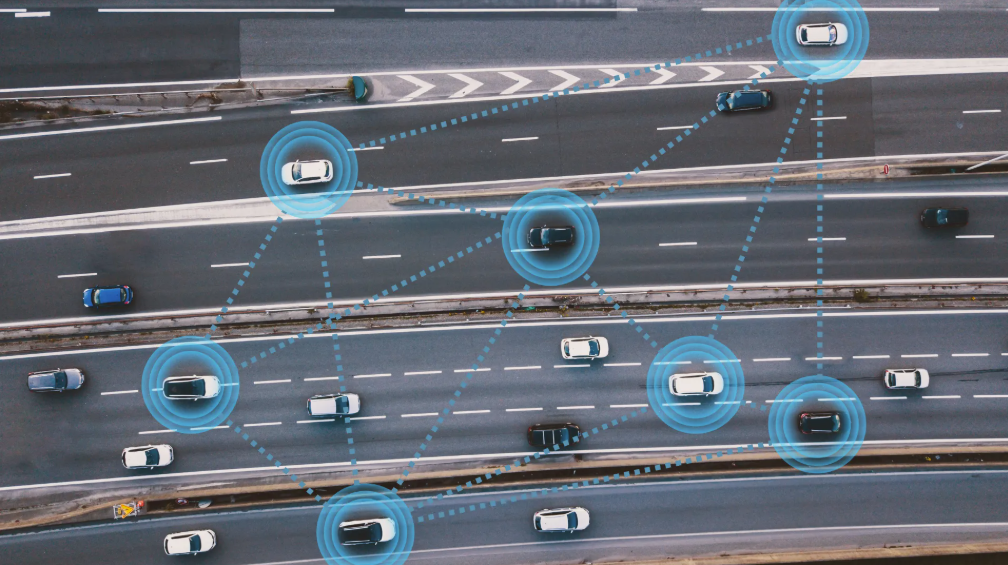
A. Engine performance monitoring
Connected cars use sensors to monitor engine performance in real-time. This data can be used to alert drivers when there are issues with the engine or identify areas of improvement. The data collected can be used to improve the overall performance of the vehicle by providing data-driven insights. This data can be used to make adjustments to the engine, reduce emissions, and improve fuel efficiency. Additionally, the data can be used to diagnose and repair any underlying issues that may exist. This data can even be used to predict when maintenance and repairs may be needed in the future, allowing for proactive maintenance and repair planning.
B. Location tracking
Connected cars also use sensors to track location. This data can be used to provide insights into traffic patterns and identify areas of improvement. For example, it can be used to determine the most efficient routes, identify peak traffic times, or improve road conditions. Additionally, location tracking can be used to identify dangerous driving conditions or areas with higher traffic accident rates. With this data, governments and municipalities can take action to improve infrastructure and road safety. Location tracking can also be used to provide navigation assistance to drivers and to help emergency responders locate drivers in need of assistance. Google Maps is an example of route planning using mobile and IoT data.
C. Driver assistance
Connected cars also use sensors to provide driver assistance. For example, sensors can be used to detect obstacles in the road and alert drivers when there is a potential danger. This can help reduce accidents and improve safety. In addition to detecting obstacles, sensors can also be used to provide driver assistance with navigation and parking. For instance, sensors can detect available parking spots and direct drivers to them. They can also alert drivers when they are approaching a stop sign or traffic light, helping them to stay safe and follow the rules of the road. Moreover, sensors can be used to provide drivers with suggestions for the most efficient route to their destination, helping to reduce traffic and save time.
D. Autonomous driving
Autonomous driving is one of the most popular applications of IoT. Autonomous cars use sensors and artificial intelligence to monitor the environment and identify potential hazards. This data can then be used to automate the cars' driving process and improve safety.
Autonomous driving has the potential to revolutionize transportation by reducing traffic congestion, improving fuel efficiency and transforming cars in a service.
By using data-driven algorithms, autonomous cars can identify the most efficient route and reduce the amount of time spent in traffic.
This technology has the potential to significantly reduce our dependence on fossil fuels and help combat climate change.
E. Remote Car Diagnostics
IoT can also be used to diagnose car problems remotely. Sensors can be used to monitor the performance of the car and identify potential issues. This data can then be used to provide timely maintenance and reduce costs.
Through Car Diagnostics users and car vendors can get detailed analysis on the car's performance, helping to identify ways to optimize fuel efficiency, detect hazardous driving behavior, and identify driver behavior that could lead to accidents. With the use of IoT applications, car owners will be able to receive regular updates on their car's performance, and can make adjustments as needed to ensure their car is in peak condition. Octo Telematics is an example of a provider of remote car diagnostics.
F. Connected entertainment
IoT can also be used to provide connected entertainment in cars. Sensors can be used to track the location of the car and provide personalized entertainment such as music and videos. This can help reduce driver distraction and improve safety.
G. Vehicle-to-vehicle communication
Vehicle-to-vehicle (V2V) communication is another application of IoT. V2V communication allows cars to communicate with each other and exchange data. This data can then be used to improve safety and reduce traffic congestion. The data exchanged between vehicles through V2V communication can include speed, direction, and distance.
This information can be used to alert drivers to potential hazards and allow cars to take evasive action. It can also be used to create a network of vehicles that can cooperate and plan routes together to reduce traffic congestion.
Furthermore, this data can be used to provide feedback to drivers, allowing them to make better decisions on the road.
Finally, this data can be used to develop automated driving systems that can help reduce the likelihood of accidents. V2V communication is revolutionizing the way we travel, making roads safer and more efficient. DSpace is an example of V2V solutions
H. Intelligent parking systems
Intelligent car parking systems through the Internet of Things (IoT) can revolutionize the way we park our vehicles. These systems use IoT-enabled sensors to detect and monitor available parking spots, allowing drivers to easily locate and reserve a parking space. AI Systems is an example of a provider of this kind of solution. Moreover, the system can also be used to optimize parking lot operations, controlling access and payment, as well as providing real-time data to identify trends and maximize efficiency. Furthermore, these systems can also be used to reduce traffic congestion, as drivers can easily determine how far away their destination is from the nearest parking spot. With intelligent car parking systems, parking is made easier and more efficient for everyone.
IoT Applications of Smart Manufacturing
Smart manufacturing is another application of IoT. Smart manufacturing uses connected devices such as sensors, cameras, and RFID tags to monitor the manufacturing process and identify areas that need improvement. This can help reduce costs and improve efficiency.

A. Automation of production
IoT can help to automate tasks that are normally done manually. Sensors can be used to track the performance of machines and identify areas that need improvement. This can help to streamline production and increase efficiency. Automated production processes can also help to reduce errors and improve quality control. Finally, automation of production processes can lead to improved customer satisfaction by enabling faster delivery times and higher quality products. Things 5 offers these features in the Plant toolkit.
B. Quality control
IoT can help automate the quality control process. By using automated data collection and analysis, manufacturers can quickly identify quality problems and address them before they become a larger issue. This will help ensure that only the highest quality products are being produced and that customers are getting the best possible product. Furthermore, this can help increase customer satisfaction, as they will be more likely to buy a product with a higher level of quality. Cloudflight is an example of a solution for AI-driven quality control
C. Predictive maintenance
Predictive maintenance is an increasingly popular use of IoT technology. By using sensors and other technologies, manufacturers can detect potential issues with machines before they cause any damage. This helps to minimize downtime and keep operations running as smoothly as possible. Additionally, predictive maintenance can help to reduce costs associated with repairs and maintenance, as well as improve the overall efficiency of the organization. Overall, IoT technology has the potential to revolutionize the way organizations approach maintenance and can help to improve operational efficiency. Things 5 offers these features in the Plant toolkit.
D. Supply chain management
The use of IoT in supply chain management can provide a range of benefits, such as improved inventory management, reduced waste, and better customer service. IoT can provide visibility into the supply chain, enabling manufacturers to track goods in real time. This data can be used to optimize production, and to identify areas of inefficiency. Additionally, IoT-enabled devices can provide automated alerts when products are running low, allowing manufacturers to restock in a timely manner. This can help them avoid costly delays and supply shortages. By enabling more accurate and timely replenishment, IoT can help reduce costs and minimize disruption. Reflex provides a solution for inventory management.
Conclusion
The Internet of Things (IoT) has opened up a world of possibilities with its incredible applications. From home automation to healthcare to smart cities, IoT is transforming the way we live and work. We hope this article has provided some inspiration for your own IoT projects. With the right technology and applications, your projects can help improve efficiency, reduce costs, and improve the quality of life for everyone.
